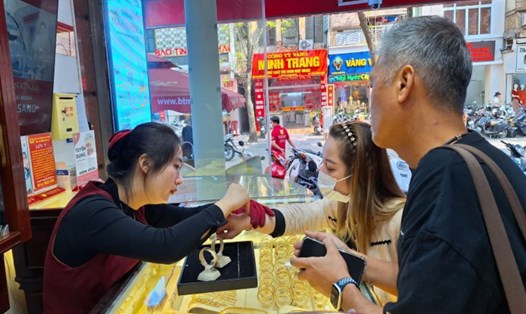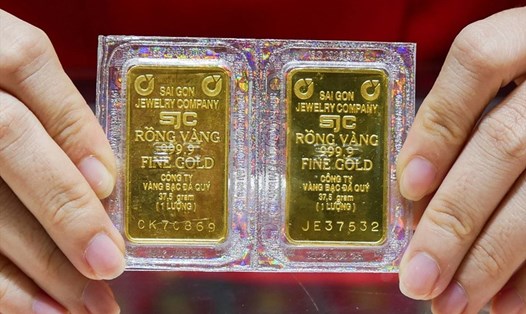The State Bank is finalizing a draft Decree amending and supplementing a number of articles of Decree 24/2012/ND-CP on management of gold trading activities. One of the highlights is to allow credit institutions and businesses that meet the conditions to import raw gold and directly produce gold bars, instead of only maintaining the current one-stop gold brand mechanism.
Sharing with Lao Dong, Mr. Dao Xuan Tuan - Director of the Foreign Exchange Management Department, State Bank - said that based on the macroeconomic situation, monetary policy and developments in the gold market in each period, the State Bank will issue specific limits to businesses and credit institutions that are eligible to import raw gold. On that basis, licensed units will be allowed to participate in the production of gold bars and supply to the market.
The draft also clearly stipulates the responsibilities of licensed enterprises. These units must announce applicable standards on the volume and content of gold of products, and at the same time build a complete and accurate information system to store data on gold bar trading. This data must be connected to provide to the State management agency upon request.
When the new mechanism is implemented, the market will have more gold bar brands produced by enterprises and banks. This not only creates competition but also helps people have more options, while hoping to narrow the gold price gap between brands, domestic and international markets. The draft also requires gold bar transactions to be conducted through accounts and using electronic invoices to increase transparency and cash flow traceability, contributing to controlling market efficiency.
Regarding the production of gold jewelry for fine arts, the State Bank said that there are currently more than 6,000 enterprises operating in this field, but most of them have small capital. Through the summary of the implementation of Decree 24, many enterprises have proposed to allow the expansion of raw gold imports to meet domestic production needs.
Mr. Dao Xuan Tuan shared: "The new draft will stipulate that only enterprises and credit institutions eligible to produce gold bars are licensed to import raw gold. After that, these units will resell the raw materials to enterprises producing gold for handicraft jewelry".
According to him, this approach helps control market input, while creating conditions for businesses in the industry to have more legal supply to develop production.
Licensed units must also comply with requirements on publicity and transparency in the import and distribution of raw gold. A synchronous information storage and data connection system will be established to serve the inspection and supervision of State management agencies.
The amendment of Decree 24 in the direction of expanding the subjects allowed to participate in gold production and import, while tightening the monitoring mechanism, is expected to create a turning point for the Vietnamese gold market. The market will gradually shift from an exclusive model to healthier, more transparent and stable competition.
Solving the gold problem does not stop at removing monopoly
According to Dr. Chau Dinh Linh - an economic expert, the world gold price increased by more than 26% in the first half of 2025 alone, the highest level since 2010, leading to a wave of speculation in Vietnam. The domestic gold market fell into a state of supply-demand overload, with a price difference of nearly 20 million VND/tael at one point. This shows that the current gold management model has revealed many limitations, especially the lack of transparency and disconnection with the international market.
Dr. Linh believes that amending Decree 24 in the direction of removing the monopoly on gold bar production is necessary but not enough. If the implementation is not strictly controlled, the risk of the market falling into a state of formal competition, where some groups with advantages continue to dominate supply is entirely possible.
In addition to licensing qualified enterprises, he proposed to apply in parallel tax and transaction control tools to limit speculation, while increasing the role of a data system connecting enterprises and management agencies. Only by ensuring the transparency of the entire chain - from imports to final transactions - can the gold market truly stabilize and avoid manipulation at sensitive times.











